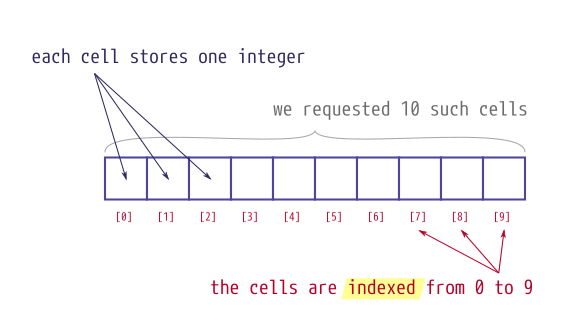Question
Task B. Print all integers from the requested interval. Write a program print-interval.cpp that asks the user to input two integers L and U(representing the
Task B. Print all integers from the requested interval.
Write a program print-interval.cpp that asks the user to input two integers L and U(representing the lower and upper limits of the interval), and print out all integers in the range L i separated by spaces. Notice that we include the lower limit, but exclude the upper limit.
Example
$ ./print-interval Please enter L: -5 Please enter U: 10 -5 -4 -3 -2 -1 0 1 2 3 4 5 6 7 8 9
You can use any loop construct to achieve this result, but the most idiomatic way to do such an iteration in C++ is to use a for loop that starts with a counter variable i = L and keeps iterating while i
for(int i = L; i U; i++) { // the body of the loop will get executed for // all values of i starting at L // and ending at the largest integer less than U } As a side note, also notice that if you change the middle condition in the loop to i L i U).
Introducing arrays.
If you need to store values in a table-like fashion, C++ provides us with the array data structure. The following code
int myData[10];
creates an array called myData with 10 cells each storing integer values:

The cells of the array are indexed from 0 through 9, and can be accessed by specifying their index in square brackets, myData[i]. You can treat arrays as tables whose elements can be accessed by their index. For example:
myData[0] = 1984; // update element at index 0 myData[7] = 1975; // update element at index 7 myData[2] = 1966; // update element at index 2 cout myData[2] endl; // print the value of the cell // at the index 2 on the screen, // which is 1966.
Task C. Using arrays to store, update, and retrieve numbers.
Write a program edit-array.cpp that creates an array of 10 integers, and provides the user with an interface to edit any of its elements. Specifically, it should work as follows:
Create an array myData of 10 integers.
Fill all its cells with value 1 (using a for loop).
Print all elements of the array on the screen.
Ask the user to input the cell index i, and its new value v.
If the index i is within the array range (0 i
The repetition of the steps 3-4-5 can be implemented with a do while loop:
// make array and fill it with 1 do { // print the array // get i and v from the user // if i is good, update the array at index i } while (...); // if the index was good, repeat The program should keep running until the user inputs an out-of-range (invalid) index.
Example:
$ ./edit-array 1 1 1 1 1 1 1 1 1 1 Input index: 8 Input value: 99 1 1 1 1 1 1 1 1 99 1 Input index: 0 Input value: 300 300 1 1 1 1 1 1 1 99 1 Input index: 10 Input value: 5 Index out of range. Exit.
Test your program. Check that all array elements are editable, for instance, use the program interface to make it print out sequence 5 10 15 20 25 30 35 40 45 50. Check that all possible edge cases are correctly handled, and the program exits when invalid index is input.
Task D. Computing Fibonacci Numbers with Loops and Arrays 0, 1, 1, 2, 3, 5, 8, 13
First, a quick intro:
Fibonacci numbers is a sequence of numbers that starts with F(0) = 0 and F(1) = 1, with all the following numbers computed as the sum of two previous ones, F(n) = F(n1) + F(n2):
0 1 1 (=1+0) 2 (=1+1) 3 (=2+1) 5 (=3+2) 8 (=5+3) 13 (=8+5) and so on
To make a C++ program to keep track of the previous numbers so that we can compute the new ones, we can use an array of integers:
// make an array int fib[60]; // first two terms are given fib[0] = 0 fib[1] = 1 // and all the following ones can be computed iteratively as fib[i] = fib[i-1] + fib[i-2]
The task:
Write a program fibonacci.cpp, which uses an array of ints to compute and print all Fibonacci numbers from F(0) to F(59).
Example:
0 1 1 2 3 5 8 13 ...
Once your program is complete and works, check carefully the values printed on the screen. Specifically, what is happening when the numbers approach two billions? We expect that at some point the numbers start diverging from what they should be. Describe what you observe and explain why it is happening in a program comment.

Step by Step Solution
There are 3 Steps involved in it
Step: 1

Get Instant Access to Expert-Tailored Solutions
See step-by-step solutions with expert insights and AI powered tools for academic success
Step: 2

Step: 3

Ace Your Homework with AI
Get the answers you need in no time with our AI-driven, step-by-step assistance
Get Started


